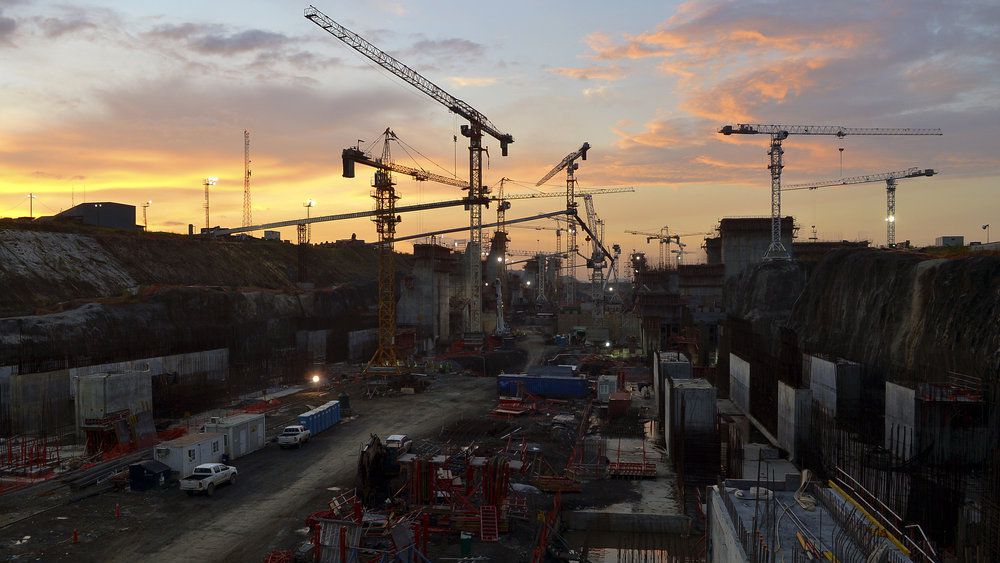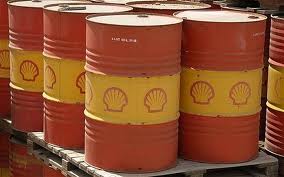|
When Will the New Panama Canal Affect East Coast Ports?
 The Panama Canal expansion is set to open soon with an inaugural ceremony set for June 26. While it will create a new route for larger ships to transit between the Atlantic and Pacific, logistics experts disagree on its immediate effects for U.S. East Coast and Gulf Coast ports - many of which have invested heavily in dredging and facilities upgrades to accommodate an expected increase in traffic.
At a panel at the Journal of Commerce's TPM Conference (covered by JOC), Dean Tracy of consultants Global Integrated Services suggested that "most importers will not switch from Suez to Panama" for the Asia-USEC routes due to insufficient demand. "Rates are so low today to West Coast that I don't know where they will find incentive to switch to Panama," he said. Dan Smith, principal in the Tioga Group, agreed that the East Coast "ports won't fill up right away . . . the [beneficial cargo owners] will wait and see how it works." |
|
|
Hapag-Lloyd & Five Asian Liners Form New Shipping Alliance
 Hapag-Lloyd AG, Germany's top container shipping line, and five Asian carriers will form a new vessel-sharing alliance to take on bigger rivals amid a glut in capacity that's depressed freight rates.
The partners will include Japan's Kawasaki Kisen Kaisha Ltd., Mitsui OSK Lines Ltd., Nippon Yusen KK, South Korea's Hanjin Shipping Co. and Taiwan's Yang Ming Marine Transport Corp., the Hamburg-based company said in a statement. Called 'The Alliance,' it will control 18 percent of the world's container shipping fleet with more than 620 vessels and a combined capacity of 3.5 million standard twenty-foot containers, or TEU, according to the statement.
Global shipping lines are regrouping to compete more effectively against market leaders A.P. Moeller-Maersk A/S and Mediterranean Shipping Co. that are allied under the 2M partnership, which controls 28 percent of the market, according to Alphaliner. |
|
Shipping Leaders See No Upturn for Containers and Bulk for Two More Years
 A recovery for the sorry state of the shipping market seems no where in sight yet, as shipping leaders are forecasting another couple years of downturn for the dry bulk and container sectors.
With the lingering overhang of tonnage glut and slowing trade growth, shipping companies have been struggling to maintain their profitability, and threats of bankruptcy continue to loom over many loss-making owners and operators.
Marvin Zhang, chief financial officer of China Cosco Shipping Container Lines Co, noted that shipping will continue to face difficult operating environments in the next one to two years.
|
|
OPEC Signals Greater Oil Glut in 2016 as Its Output Surges
 OPEC said the global oil market is oversupplied and signalled the glut may increase this year, as surging output from its members makes up for losses from other countries whose production has been hit by a price fall. Supply from the Organization of the Petroleum Exporting Countries (OPEC) is climbing after sanctions on Iran were lifted and an initiative with Russia and other non-members to tackle a supply glut by freezing output failed last month. OPEC pumped 32.44 million barrels per day (bpd) in April, the group said in a monthly report citing secondary sources, up 188,000 bpd from March. This is the highest since at least 2008, according to a Reuters review of past OPEC reports. "Fundamentally, oversupply still persists," OPEC said in the report published on Friday. "Oil output remains high." |
|
Global Cap on Sulfur in Bunkers Should Be Phased In
 A recent study by Navigistics Consulting andEnSys Energy concludes that theInternational Maritime Organization (IMO) should consider phasing in the global 0.50 percent fuel sulfur cap, which is set to be introduced in either 2020 or 2025 pending the outcome of a fuel availability study, delegates gathered this week for Motorship's 38th Propulsion & Emissions Conference have heard.
"The IMO should consider a phased approach by staggering the sulfur limit reduction, or by phasing in the new limit geographically or by ship type," said David St. Amand, President of Navigistics Consulting.
The study is said to have used the IMO's third Greenhouse Gasses (GHG) Study as a base for which to remodel anticipated demand for compliant bunkers, taking into account the possibility that slow steaming will be less common, the anticipated uptake of scrubbers, alternative fuel adoption, as well as changes in efficiency of vessel designs. |
|
The Quality of 'Hybrid'/ECA-Compliant Fuels - Is More Choice Necessarily a Good Thing?
 Since the introduction of new ECA fuels (NEFs) in the market end of 2014, the increase in number and variety has been simply impressive.
Over 20 products from different origins with and varying in quality characteristics, yet with the apparent common element of the maximum Sulphur (S) content of 0.10%. So is having all these choices necessarily a good thing?
As said, the current list consists of more than 20 products with qualities that vary according to their origin. The NEFs are comprised of various products from hydrocracker cycle oils, vacuum gas oils, (marine) diesel oils and light residuals and may differ significantly in their individual characteristics (see below typical values of part of the different products currently available).
|
|
As Korean Shipyards Flounder, Central Bank Dragged Into Rescue Bid

They are South Korea's "too-big-to-fail" firms - the world's largest shipbuilders that are both a massive economic force and an important national symbol - and the government wants the central bank to fund an unconventional rescue of the sector.
The three biggest shipbuilders - Daewoo Shipbuilding & Marine Engineering, Hyundai Heavy Industries Co Ltd and Samsung Heavy Industries Co Ltd - sustained record losses last year, dragged down by the global commodities plunge and falling trade volumes.
The government wants the central bank to print money to buy bonds in two state banks propping up shipyards as well as shippers - a measure some officials call quantitative easing. |
|
Shell's Earnings Plummet
 Oil company Royal Dutch Shell said first-quarter earnings plunged 58 percent as depressed crude prices create "hugely challenging times" for the energy industry.
The Anglo-Dutch company said Wednesday that profit adjusted for changes in the value of inventories and excluding one-time items dropped to $1.55 billion from $3.74 billion in the same period of 2015.
The results came after Shell completed a $54 billion takeover of BG Group Plc earlier this year - a deal that increases the company's proven reserves of oil and natural gas by 25 percent. While critics questioned the deal following the drop in oil prices, Shell said it would provide opportunities to cut costs by eliminating duplication.
|
|
Please let us know if we can be of any assistance with any of your fuel or lubricant oil needs.
We hope your vessels are having success out there and look forward to working with you in the near future.
|
|
 |
|
Bunker Price Indications
*Prices are indications only. Please contact us for firm pricing. |
|
|
Weekly Tanker Update
| |
Clipper Oil offers a weekly update with the latest positions of the high-seas fuel tankers working throughout the Pacific.
To view the latest positions of our high-seas tankers, please click here.
To be added to our weekly high-seas tanker email distribution list, please click here.
|
|
|
Contact Us 24/7
USA Headquarters
2040 Harbor Island Drive
Suite 203
San Diego, CA 92101 USA
Tel: +1-619-692-9701
Fax: +1-619-398-0810
Singapore Office
8 Eu Tong Sen Street
#23-86, The Central
Singapore, 059818
Tel: +65-6646-5367
Fax: +65-9640-7998
bunkers@clipperoil.com
| |
|
Pacific Ocean Specialists

| |
|
|
|